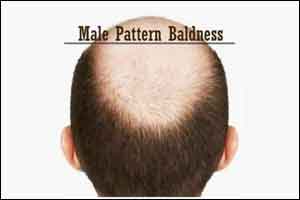- Home
- Editorial
- News
- Practice Guidelines
- Anesthesiology Guidelines
- Cancer Guidelines
- Cardiac Sciences Guidelines
- Critical Care Guidelines
- Dentistry Guidelines
- Dermatology Guidelines
- Diabetes and Endo Guidelines
- Diagnostics Guidelines
- ENT Guidelines
- Featured Practice Guidelines
- Gastroenterology Guidelines
- Geriatrics Guidelines
- Medicine Guidelines
- Nephrology Guidelines
- Neurosciences Guidelines
- Obs and Gynae Guidelines
- Ophthalmology Guidelines
- Orthopaedics Guidelines
- Paediatrics Guidelines
- Psychiatry Guidelines
- Pulmonology Guidelines
- Radiology Guidelines
- Surgery Guidelines
- Urology Guidelines
Synthetic sandalwood is new option for baldness cure

A new study has found that men who are going bald can boost their hair growth from sandalwood applied to the scalp. Researchers from the University of Manchester in their paper published in the journal Nature Communications revealed that the epithelium of human hair follicles, particularly the outer root sheath, expresses olfactory receptor OR2AT4, and that specific stimulation of OR2AT4 by a synthetic sandalwood odorant (Sandalore®) prolongs human hair growth ex vivo by decreasing apoptosis and increasing production of the anagen-prolonging growth factor IGF-1.
Olfactory receptors are expressed by different cell types throughout the body and regulate physiological cell functions beyond olfaction. In particular, the olfactory receptor OR2AT4 has been shown to stimulate keratinocyte proliferation in the skin.
The researchers experimented by soaking skin samples in a synthetic sandalwood solution for six days and then observing the skin for changes to hair follicles. They reported that the treated hair follicles survived longer than those that went untreated, and also produced more growth factor. The researchers verified that it was the synthetic sandalwood interacting with the receptor OR2AT4 that caused the change by blocking the receptors, and noting that doing so inhibited the change from occurring.
Hair follicles are groups of cells that surround hair roots and have a three-stage life cycle. Baldness and hair loss occurs when these follicles start weakening, as a result, the ability to anchor hair to the skin looses eventually.
In the first stage, hair starts to grow due to stimulation of the root. Hair growth occurs through a process in which follicle cells are converted into the hair. In the second stage, cells in the follicle stop being converted into the hair. In the third stage, the hair is ejected and the follicle goes into a rest period. For normal hair growth, this process is repeated over and over.
Read Also:Very soon baldness due to alopecia areata shall be treatable
The investigators found that on exposure to synthetic sandalwood, hair cells were stimulated which led to their growth. This not only slowed down the death of hair follicles but also prolonged the "growth phase" of a hair cycle. The first stage could be made to last longer by applying synthetic sandalwood. The research found that the natural variety of sandalwood offered no such benefits and only the synthetic kind of sandalwood caused the change.
"Anyway, the synthetic sandalwood-like odorant, Sandalore, is the one that is usually used in cosmetics and perfumes, since natural sandalwood is more expensive and is more sensitizing (i.e. can induce allergy)," said co-author Dr. Ralf Paus, professor of cutaneous medicine at the University of Manchester, England.

Disclaimer: This site is primarily intended for healthcare professionals. Any content/information on this website does not replace the advice of medical and/or health professionals and should not be construed as medical/diagnostic advice/endorsement or prescription. Use of this site is subject to our terms of use, privacy policy, advertisement policy. © 2020 Minerva Medical Treatment Pvt Ltd